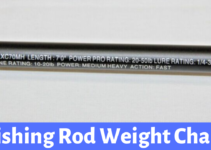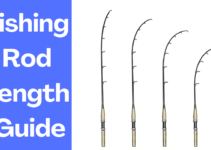Table of Contents
When getting down to fish and everything is on point, the fishes are here, and the excitement is going all good, one of the things to go wrong at this point for any fisherman is the line not working or any type of line complication. The worst thing to happen is the line twists and other fishing line problems, which can dampen the mood and hamper the angler’s activity.

Many of these problems can be avoided and corrected, luckily if it is remembered by the person to spool their fishing reel in advance. Spooling a baitcasting reel might seem to be complicated at the starting. Still, by recognizing and using these fishing Pro solutions and tips, it will be easily understandable that the spooling process is noting the complicated stuff you were thinking about.
So instead of worrying about your pieces of equipment on the water and instead spool your baitcasting reel in advance to avoid any mishap this time while fishing with some easy-to-follow spooling tips and tricks.
Equipment List
For adding a new line to your baitcasting reel, a few fishing supplies are needed, nothing extra, just the very basics to make sure nothing is later a miss:
- Rod
- Reel
- Pencil
- Monofilament fishing line
- One fisherman on the spot
- Braided fishing line (You might or might not need this, but having this would be helpful too)
And there will be no problem even if you have a fishing partner who does not carry his equipment list or is less of one of them. You can use an entire fishing line spooler to turn it into a whole baitcasting reel.
Figure out the following before spooling a baitcaster
- Which direction does your reel turn?
- Know which type of reel you have. Baitcaster, Spinning, Spin Casting, Fly, etc.
This tutorial is explicitly spooling a baitcaster reel.
Step-by-step guide for spooling a baitcaster reel
Below we are going to explain step by step guide for spooling a baitcasting reel for beginners:
Step 1: Get your Line Located Correctly
On a baitcaster reel, feed this via the road guide. You’ll need to do that earlier than and now no longer after to permit the rotation calmly distribute the road. It would help if you theoretically did that manually. However, it might be extraordinarily timed, in-depth, and complex.
Step 2: Loop the Line around the Reel Spool
On a baitcaster, this could be the most challenging element on a bait caster. If your reel has holes within the spool, you could thread the road via the gaps and provide the cope with a short twist to get the road round spool. If you don’t have holes, you’ll want to paint it to get the road around it ultimately.
With a baitcaster, you’ll need the new line spool to feed immediately onto the reel. You can do that by pushing something in the middle of the revolution and maintaining it upright. This may be as easy as a pencil via the standard. Have a person preserve the pencil on every aspect of the spool to permit the road to return off the spool straight.
Step 3: Tie an Arbor Knot around the Spool
There are overhand knots to tie here. It’s straightforward; be cautious when you tighten the knots sufficient to generate the friction had to get the spooling started. If it’s too loose, you’ll understand quickly enough.
Step 4: Pinch the Line to Maintain Tension as You Reel
so tight that you can’t reel it in. Be more cautious with monofilament and fluorocarbon lines as they stretch beneath anxiety. It would be best if you had the most straightforward to maintain the stretch to a minimum whilst maintaining it sufficiently to save you unfastened loops. You want to keep stress to make sure your reel spools are correct. Beneath neath simply in the front of the reel and begin reeling. You’ll want to pinch sufficient to maintain the road tightly; however, now, no longer.
Step 5: Reel the Line in
While preserving tension, reel the road in till there’s approximately ⅛” among the road and the out of doors of it. This is what maximum producers consider “full”.
Step 6: Feed the Line Through the Rod Guides
Run the road via the courses and deliver numerous toes of more excellent line past the final manual on the tip.
Step 7: Tie off a Lure or Hook to the End of the Line
The entire reason for this step is to hold a little bit of anxiety on the road whilst stopping the road from backing up. I want to tie off a small hook. It’s something so that it will do the process correctly and won’t tie up certainly considered one among my lures that I would possibly need to apply on some other rod.
Spooling Braided Line
A braided fishing line is a popular option for anglers due to its stretch-free design and impressive strength-to-diameter ratio.
The braided cable is rather slick, however, which can lead to drug problems, backlash, and line slippage on the spool. To combat this, it’s recommended to use a monofilament backing before spooling your reel with a braided line.
See also:
Wrapping It Up
There are still precautions to keep in mind, but nothing major. Overfilling a reel can cause casting problems later or even disruption between the line and pieces of the revolution you are using. Some lines may also absorb water, and overfilling can hold that water in the bar and make it weak from the inside. Underfilling forces the reel to spin faster to do the same amount of work as an entire reel.
This can turn out to be the cause of friction which can create problems and make extra distance when using your bait caster full of new fishing lines. All the basic setup has been done. You can invite your friend or family and head out to any fishing spot. Use these good tricks and tips of angling to spool your reel the right way or during your fishing activity so that you can do your outing and fishing without any forms of worry.
Additional resources:
- Fishing Reel Brands
- Baitcaster Vs Spinning Reel
- Baitcaster Under $100
- Baitcaster under $50
- Types of Fishing Reels
- Freshwater Spinning Reels Under $100
- Spinning Reel With Bait Clicker
- Spinning Reel With Trigger
- Fishing Reel Brands
- Baitrunner Reels
- Spinning Reels for Bass
- Ultralight Spinning Reels
- Closed Face Reels
- Open Face Reels
- Fishing Reel for Beginners
- Spinning Reels Under $100



